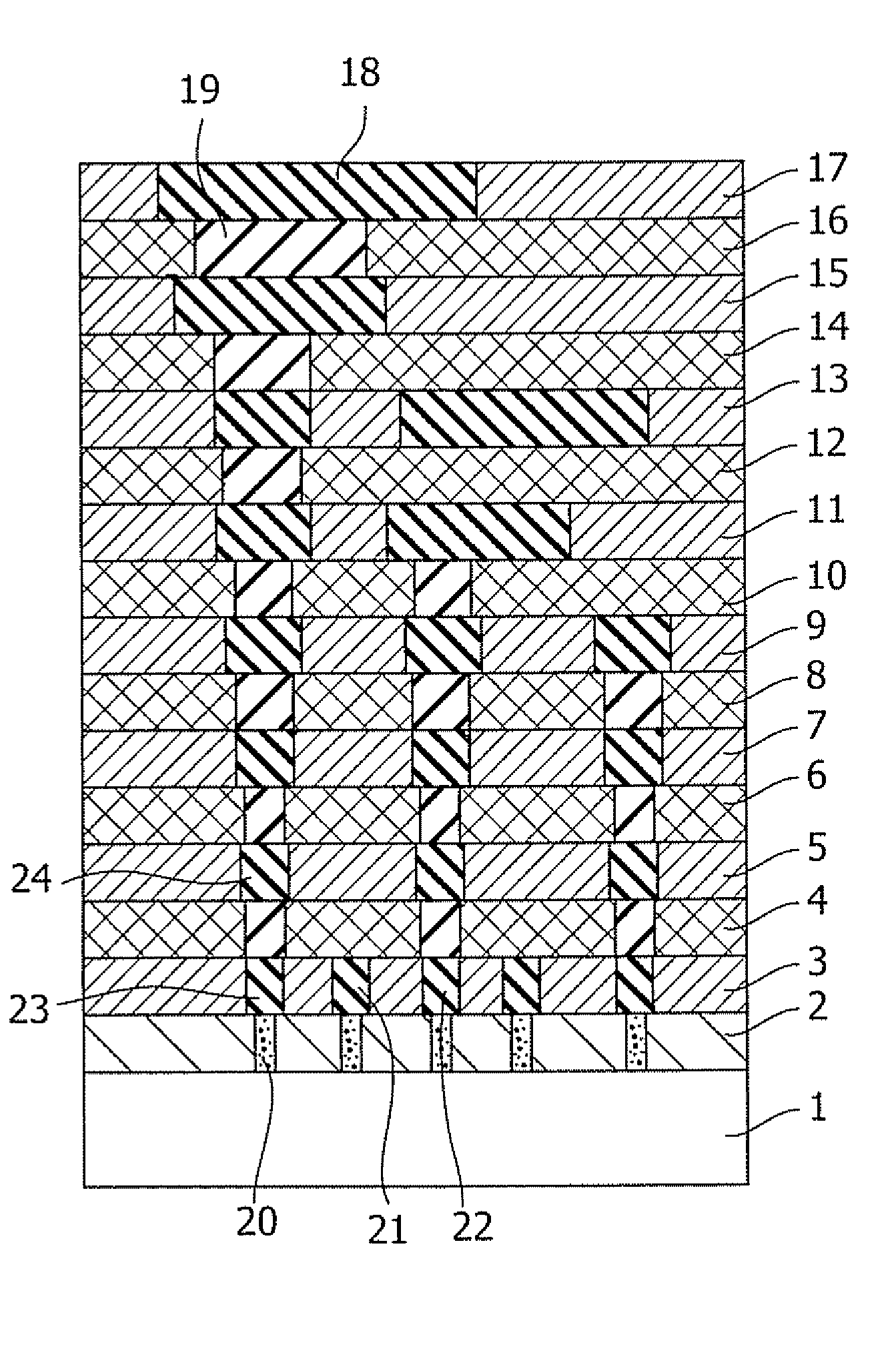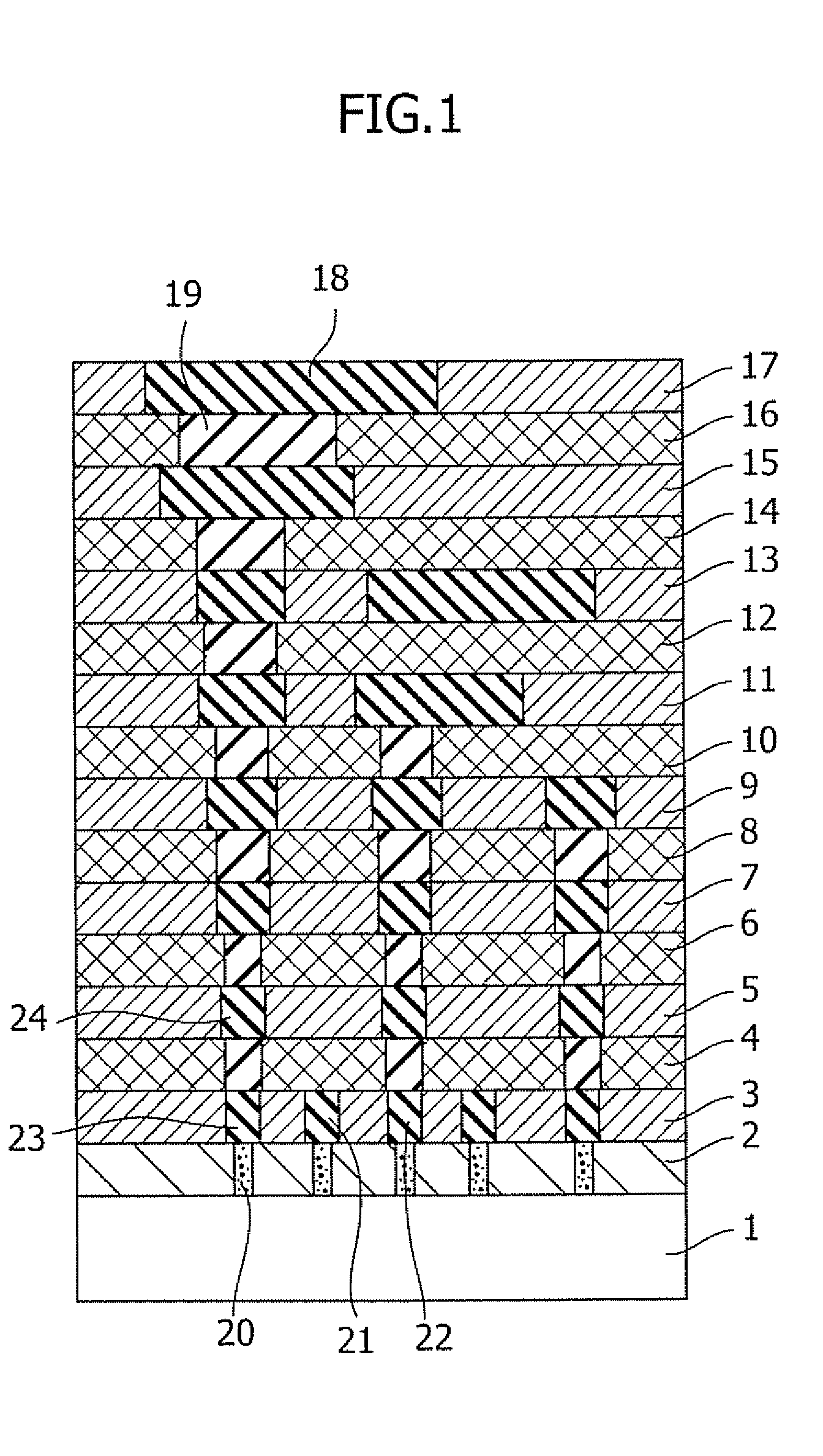Semiconductor interlayer-insulating film forming composition, preparation method thereof, film forming method, and semiconductor device
- Summary
- Abstract
- Description
- Claims
- Application Information
AI Technical Summary
Benefits of technology
Problems solved by technology
Method used
Image
Examples
preparation example 1
[0148]A mixture of 45 g of methyltrimethoxysilane and 101 g of tetraethoxysilane was added, under stirring at room temperature, to a solution obtained by dissolving 0.18 g of concentrated nitric acid in 280 g of ultrapure water. The reaction mixture gradually generated heat and reached 50° C. but 30 minutes later, it returned to room temperature. Stirring was continued for 12 hours without changing the condition. To the reaction mixture was added 300 g of propylene glycol monomethyl ether acetate (which will hereinafter be referred to as PGMEA) and the low-boiling-point solvent was distilled off under reduced pressure. During this distillation, a bath of the evaporator was kept at 30° C. or less. To the remaining solution thus obtained were added 500 ml of toluene and 500 ml of ultrapure water. The resulting mixture was transferred to a separating funnel so as to remove a water layer. The organic layer was washed twice with 200 ml of ultrapure water. The organic layer thus obtained ...
preparation example 2
[0150]In a similar manner to Preparation Example 1 except for the use of 0.11 g of concentrated sulfuric acid instead of nitric acid, synthesis was conducted, whereby 205 g of a concentrated solution was obtained. The resulting solution had a nonvolatile residue of 22.4 mass % and a weight average molecular weight, as determined by GPC, of 3,522. As a result of the 29Si—NMR measurement of the sample, it has been found that the molar ratios t1, t2, t3, q1, q2, q3 and q4 were 1%, 14%, 23%, 1%, 12%, 36%, and 13%, respectively and calculation using these ratios resulted in the following relationships:
(q1+q2+t1) / (q1+q2+q3+q4+t1+t2+t3)=0.16 and
(q3+t2) / (q1+q2+q3+q4+t1+t2+t3)=0.50.
preparation example 3
[0151]In a similar manner to Preparation Example 1 except for the use of 0.31 g of concentrated hydrochloric acid instead of nitric acid, synthesis was conducted, whereby 213 g of a concentrated solution was obtained. The resulting solution had a nonvolatile residue of 20.6 mass % and a weight average molecular weight, as determined by GPC, of 1,988. The 29Si—NMR measurement of the sample was performed. As a result, it has been found that calculation based on the molar ratios t1, t2, t3, q1, q2, q3 and q4 leads to the following relationships:
(q1+q2+t1) / (q1+q2+q3+q4+t1+t2+t3)=0.12 and
(q3+t2) / (q1+q2+q3+q4+t1+t2+t3)=0.46.
PUM
| Property | Measurement | Unit |
|---|---|---|
| Dimensionless property | aaaaa | aaaaa |
| Dielectric polarization enthalpy | aaaaa | aaaaa |
| Composition | aaaaa | aaaaa |
Abstract
Description
Claims
Application Information
 Login to View More
Login to View More - R&D
- Intellectual Property
- Life Sciences
- Materials
- Tech Scout
- Unparalleled Data Quality
- Higher Quality Content
- 60% Fewer Hallucinations
Browse by: Latest US Patents, China's latest patents, Technical Efficacy Thesaurus, Application Domain, Technology Topic, Popular Technical Reports.
© 2025 PatSnap. All rights reserved.Legal|Privacy policy|Modern Slavery Act Transparency Statement|Sitemap|About US| Contact US: help@patsnap.com



